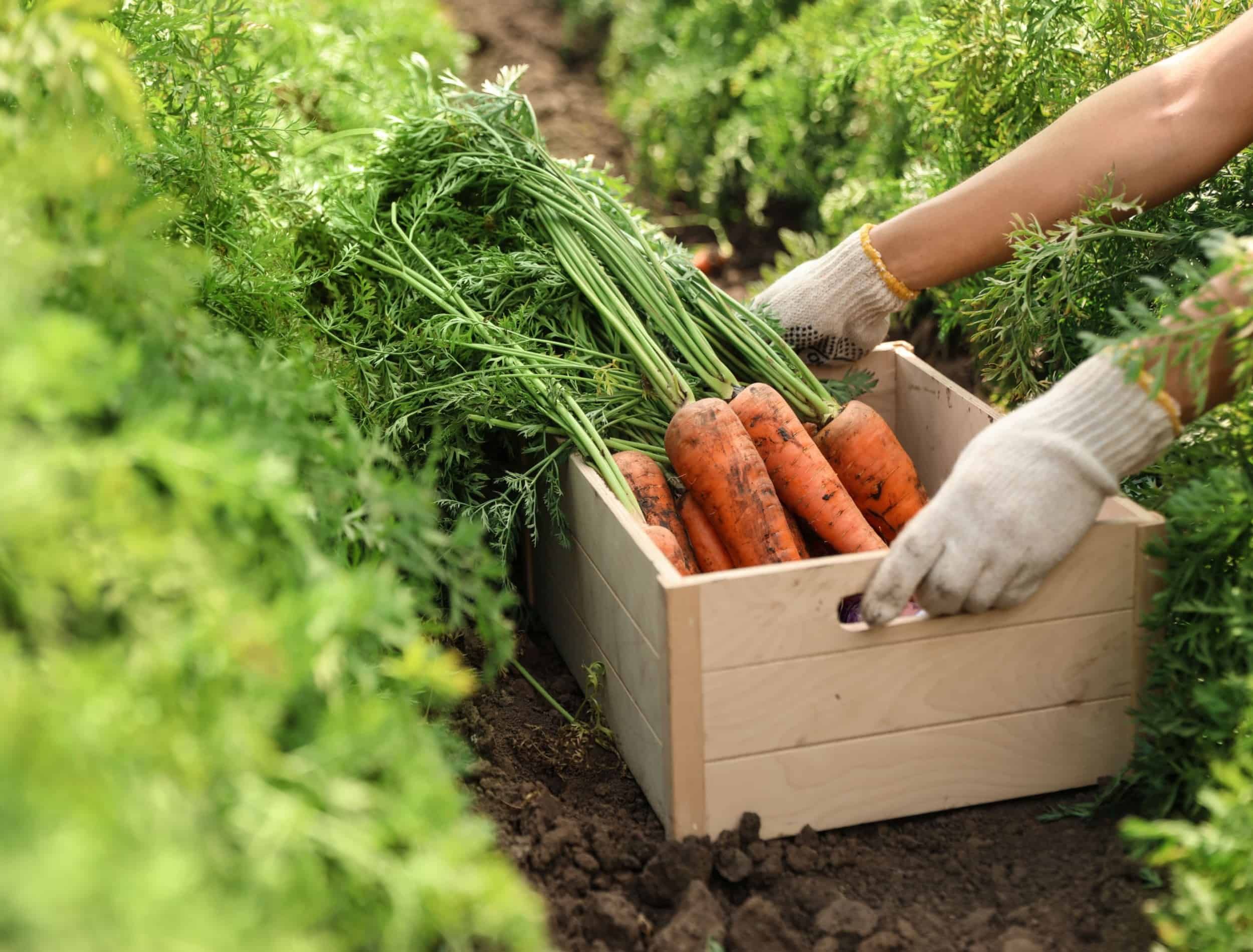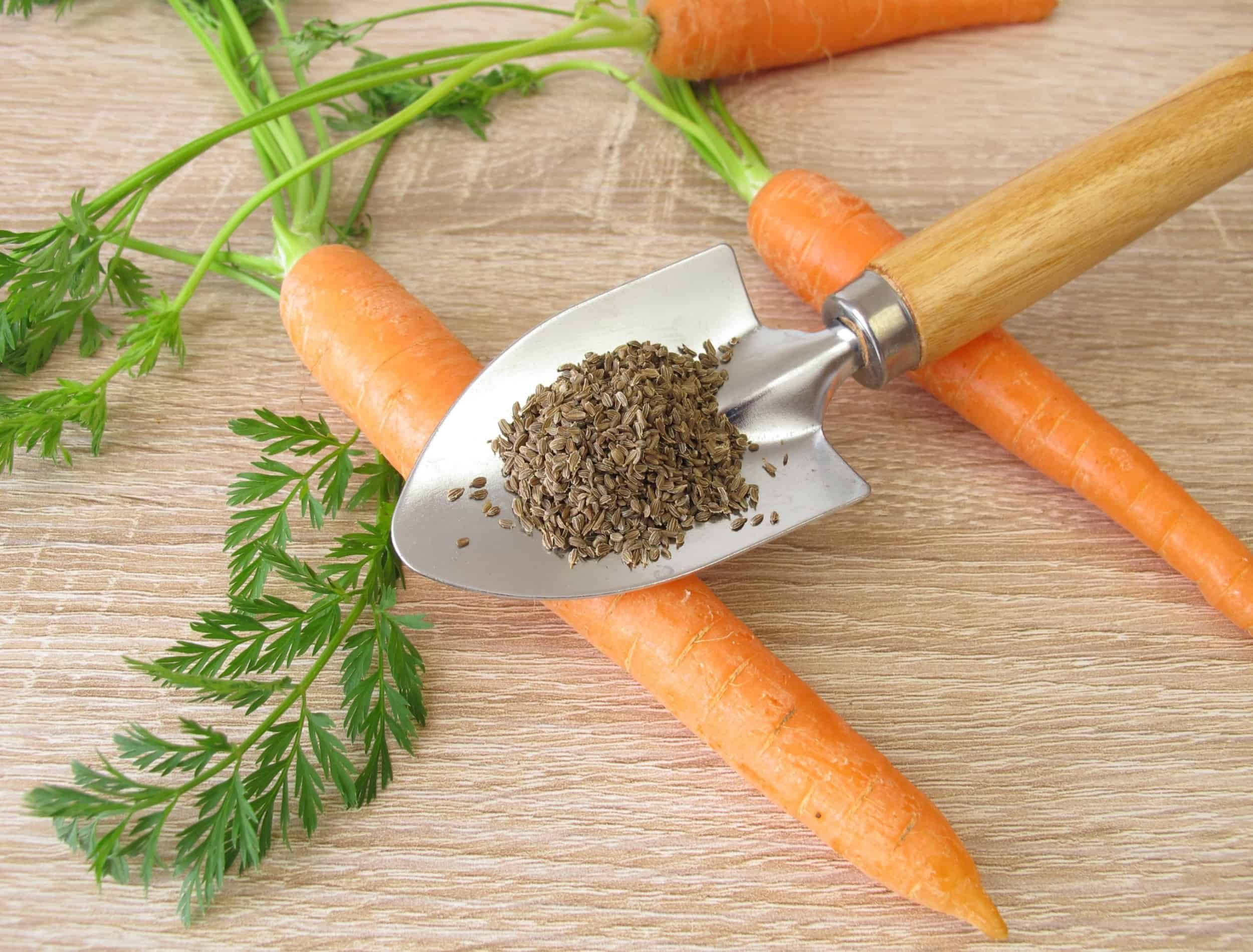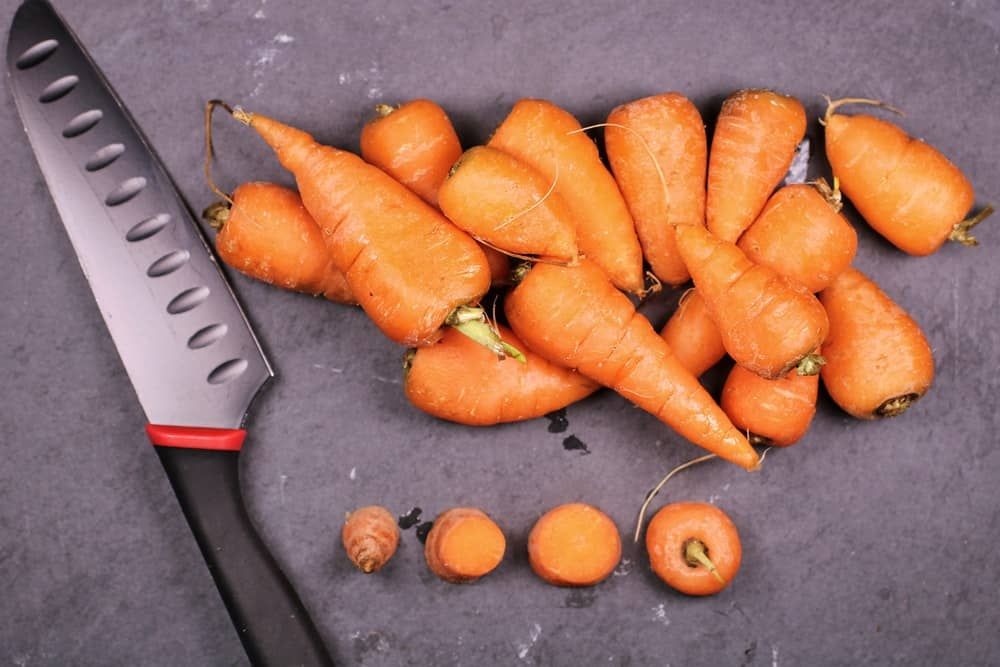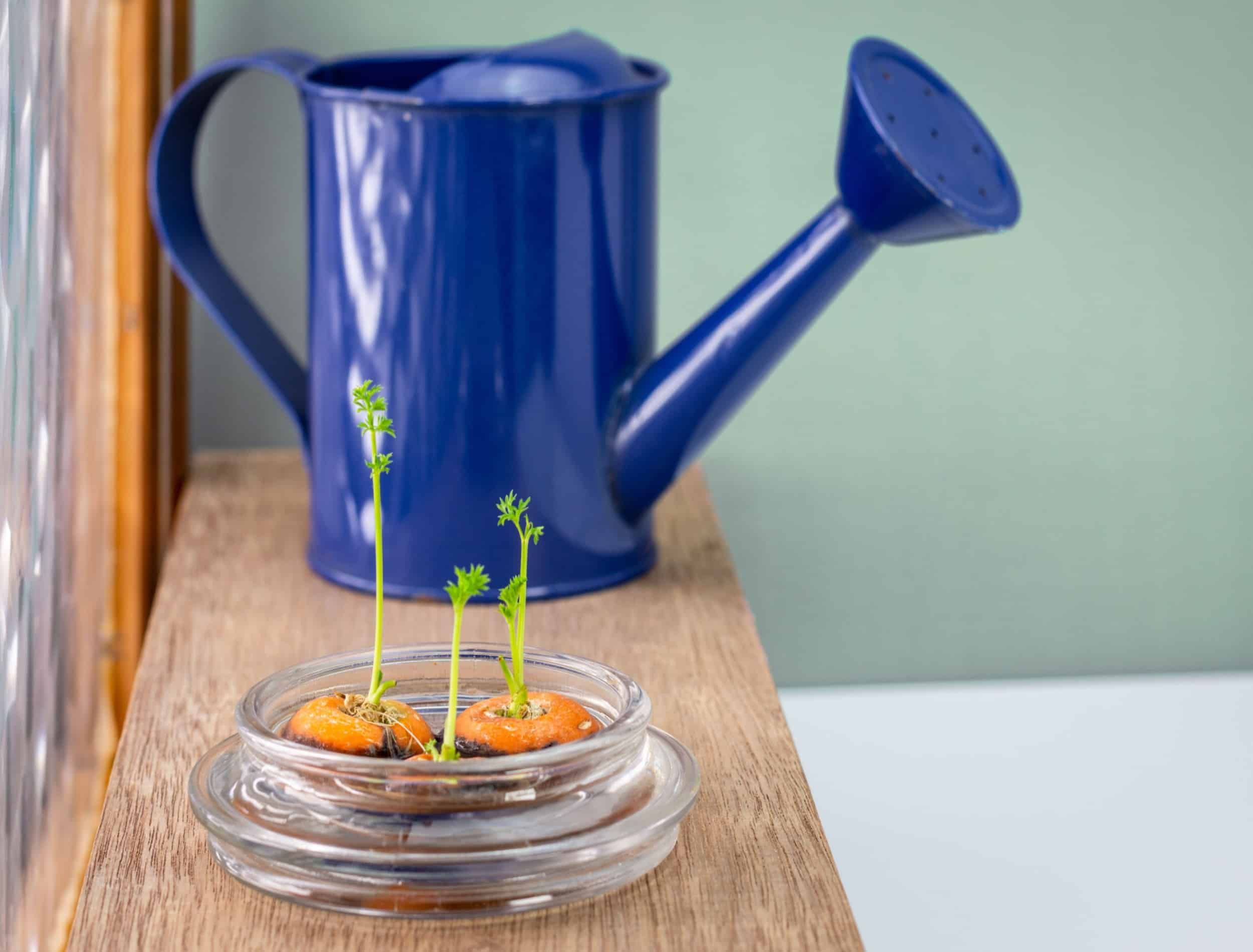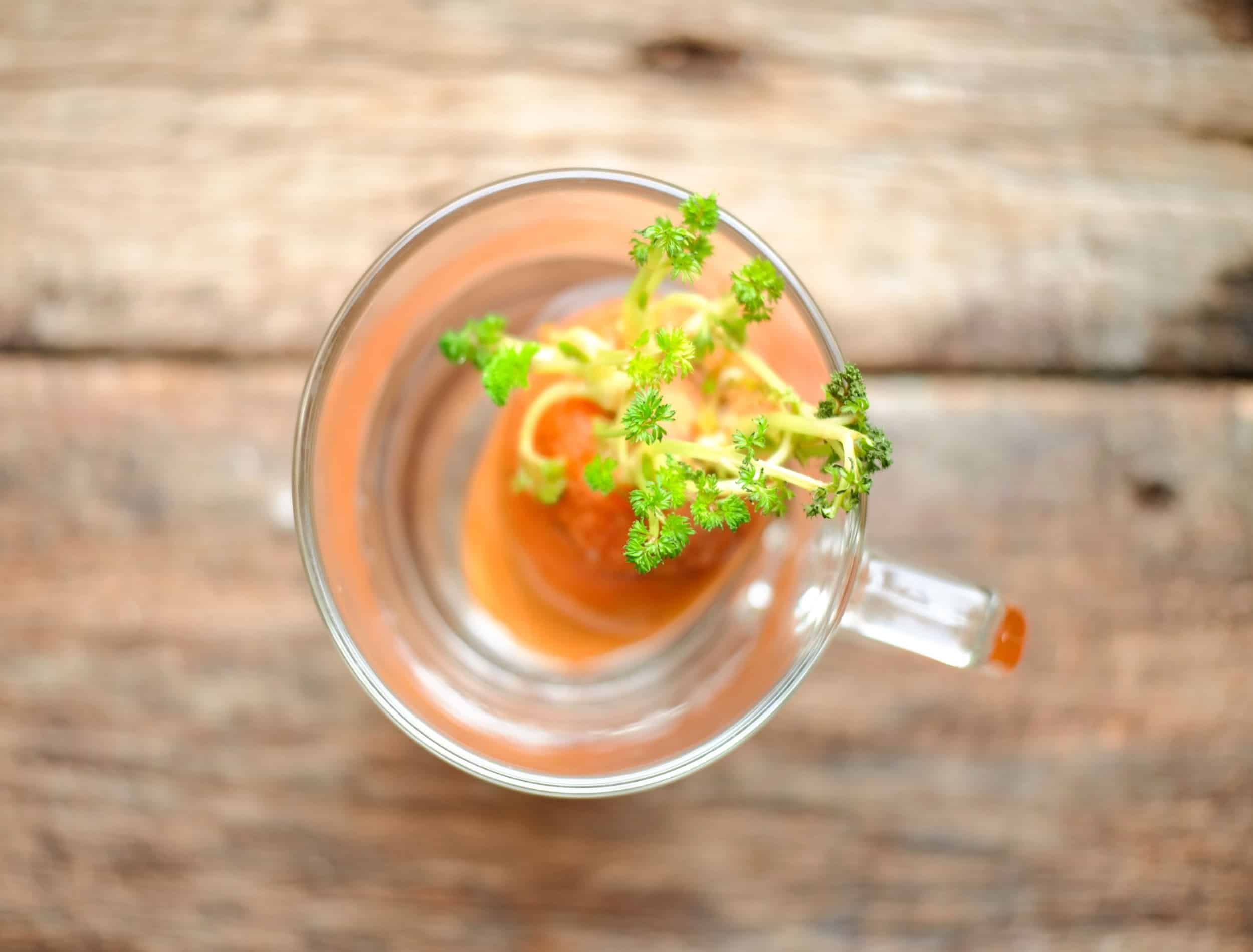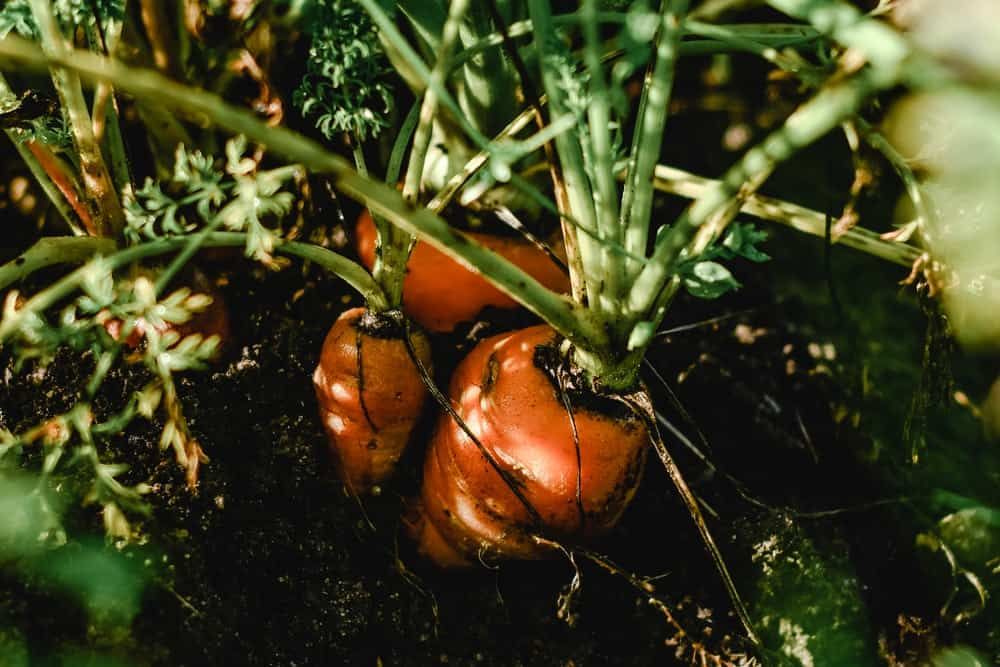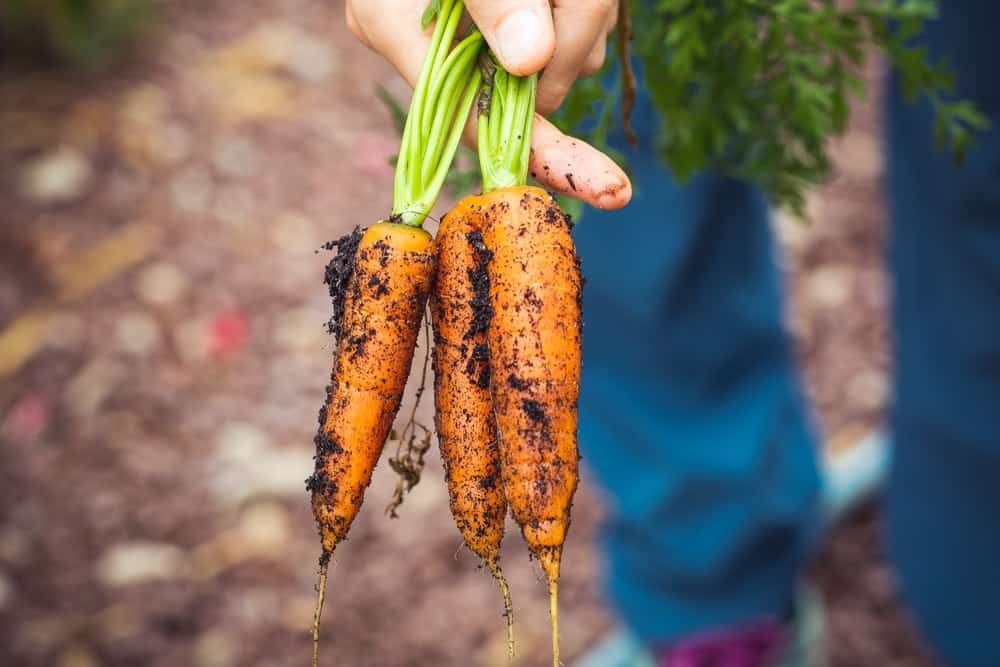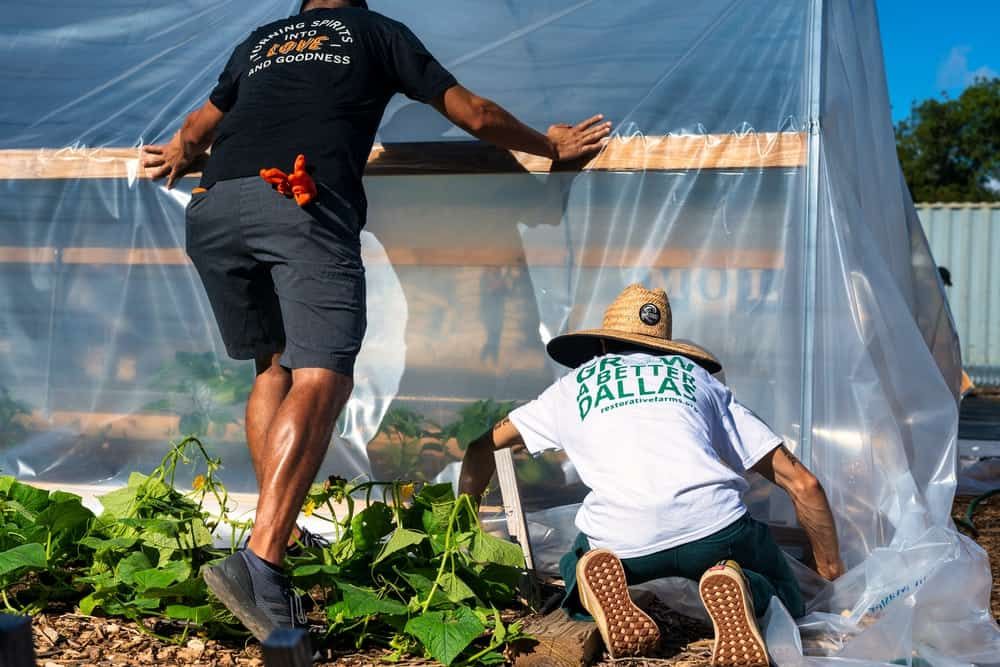Did you know that you can regrow vegetables from scraps? Herbs, green onions, lettuce, and celery are all popular, but you can even regrow carrots. Since the taproot (orange part of the carrot) won't reform from scraps, you'll be growing carrots from carrots for greens and seeds.
Carrots are biennials, which means that they produce flowers and seeds in their second year. Until their flowers bloom, they will produce a plethora of delicious greens. This guide will walk you through how to grow carrots from carrots, which is a fun experiment for everyone in the family to enjoy.
Materials Needed
Image credit: Heike Rau via Shutterstock
Before you start growing your carrots from scraps, you'll need a few things listed below:
- Carrots or carrot seeds
- Gloves
- Trowel (optional)
- Knife
- Bowl
- Soil
- Pot (optional)
- Scissors
- Brown bag
Step One: Cut Your Carrots
Image credit: Nick Collins via Pexels
To regrow carrots, you can use carrots from a local farmer’s market, the grocery store, or your very own backyard-grown variety. If you use your own garden carrots, you may need a trowel to gently loosen the soil around the carrots before pulling them from the ground.
To prep your carrot to regrow it, use a knife to cut a 1-inch piece that's attached to the end with the greens. Make sure your chunk is big enough that it still has a few "lines" going across it. These are called lateral root scars and are where your new roots will grow. Depending on how and when your carrot was harvested, you may already see the white roots growing out from these lines.
If the greens are still attached, chop them off. When you leave them, the carrot may become too top-heavy for the next step. If you’ve harvested carrots from the garden, save the greens for soups, salads, and pestos. Or, you can use them in place of parsley.
Don’t forget to eat the carrot. Crunch! That’s the best part.
Step Two: Place Carrots in Water
Image credit: HollyHarry via Shutterstock
Find a shallow bowl or plastic container and fill the bottom with enough water to cover about halfway up your carrot piece(s). You want your carrot(s) to be sitting in enough water so the roots can form, but the top should not be submerged or get overly wet. If the top of the carrot is submerged or left in the water too long, it will rot.
Place the carrot top in the water, sliced side down. If you have left any greens on the carrots, this is where it may be tricky to get the carrot to sit properly. If this is a problem, or as the greens grow, you can create a support system with toothpicks or skewers.
Step Three: Wait
Image credit: AUKARAWATCYBER via Shutterstock
Set the bowl with your carrot(s) in front of a window that receives a lot of sun. Wait and watch as your carrot tops grow. This should only take a few days. You can begin eating your carrot greens at this point and make sure to change the water every three days or so.
Don’t wait too long to move on to step four, or your carrots can rot, ruining the whole experiment
Step Four: Plant Carrot Tops
Image credit: Eva Bronzini via Pexels
Once you notice white, hairy roots forming on the orange part of the carrot, your carrot is ready to be planted in soil. Select a pot - It doesn’t need to be super deep as the carrot won’t send out deep roots.
Fill your pot with your preferred vegetable potting soil. Make a small hole in the soil and plant the carrot, covering it with dirt, leaving just the carrot top sticking out. Water your carrot and place it in an area with bright, but indirect, light for a week before moving it to a location that receives more sun.
If you have garden beds, you can transplant your carrot from your pot to your garden after it’s well established. Alternatively, you can also plant the carrot top directly into the garden after it has rooted in water. Plant carrots in a location that receives a lot of sun and water regularly. Keeping the plant indoors is also a viable option.
Step Five: Harvest Seeds and Greens
Image credit: Markus Spiske via Pexels
You can continue to harvest carrot greens for eating, but at this point, if you want more carrots later, leave the carrot greens alone. Though the taproot of your carrots won't regrow, this plant's flowers will provide you with countless seeds.
If you planted your carrot outside, you’ll have to wait until spring for it to flower. If you have your plant inside, it may flower sooner. Eventually, white flowers will form. Let them be until they start to brown and dry, leaving a carrot seed head. Using scissors, cut each seed head and place them in a paper bag.
Leave them for a few weeks to allow them to fully dry. Once the seeds have darkened, they are ready to be picked. If you only have a few heads, you can do this by hand-picking them. For larger-scale harvests, you may want to set up a drop-sheet and use a sieve to sort the seeds. Be sure to find a cool, dry place to store them over winter. Plant the seeds in the spring and reap the harvest of all your hard work.
Cold Framing
Image credit: Alfo Medeiros via Pexels
Perhaps you've already got carrots in your backyard and you'd like to harvest those seeds, rather than grow seeds from scraps. An easy way to do this is to leave a few whole carrots in the ground. The following year they will flower and you can harvest the carrot seeds in the same way as mentioned above. The one benefit to only planting the carrot top is that you get to enjoy the carrot. If you leave your carrots in the ground over winter and let them flower the following year, they will no longer be edible.
If you’re thinking about leaving a few carrots in the ground for seeds, maybe you’ve also thought about cold framing. There's no need to harvest your carrots all at once if you live in a climate where the winters are cold. You can leave the carrots in the ground and harvest them throughout the winter. This is much easier for storage, and it keeps the carrots fresh and ready for whenever you’re ready to eat them.
Conclusion
Growing carrots from carrots is a fun backyard experiment and a great way to harvest your own carrot seeds. Although carrots won't regrow their orange taproot, the carrot tops are quick growers. If you like a particular variety, or you have a rare seed, you can very easily collect hundreds of new seeds from the flowers that form.
Do you have a favorite variety of carrots? Have you tried harvesting the seeds? Let us know in the comments.

